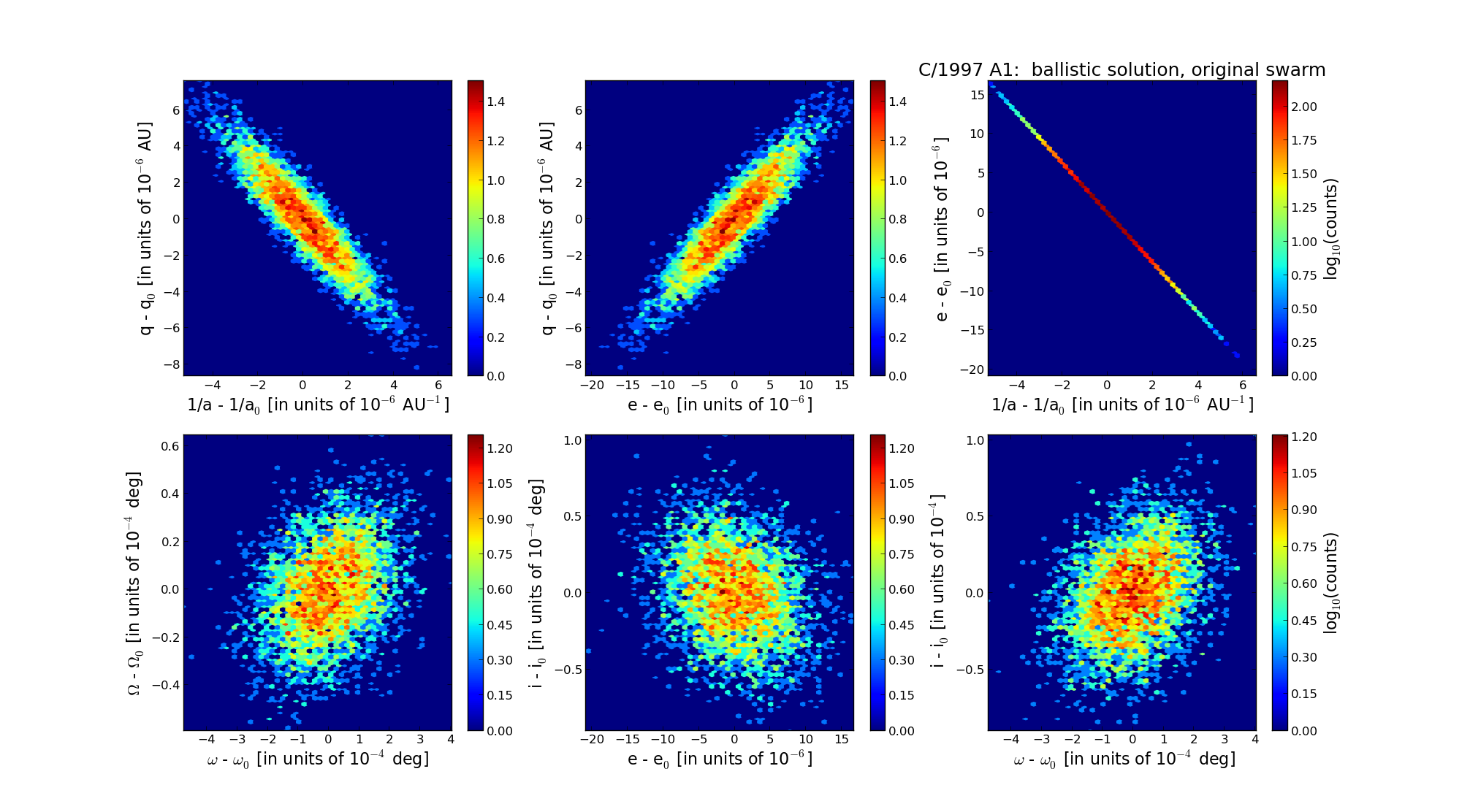| Solar System Dynamics & Planetology Group |
 |
C/1997 A1 NEAT |  |
| Solar System Dynamics & Planetology Group |
 |
C/1997 A1 NEAT |  |
| number of observations | 204 |
| number of residuals | 400 |
| data interval | 1997 Jan. 9 — 1997 Dec. 28 |
| rms [arcsec] | 0.55 |
| orbit quality class | 1b |
| Epoch (TT) | 19970601.0 | = JD 2450600.5 |
| time of perihelion passage (TT) | 19970619.592489 | ± 0.000501 |
| perihelion distance | 3.15719754 | ± 0.00000229 |
| eccentricity | 1.00205075 | ± 0.00000507 |
| argument of perihelion [deg] | 40.013168 | ± 0.000111 |
| longitude of the ascending node [deg] | 135.766750 | ± 0.000017 |
| inclination [deg] | 145.071757 | ± 0.000026 |
| inverse semimajor axis [10-6 au-1] | -649.55 | ± 1.60 |
| Epoch (TT) | 16950405 | |
| time of perihelion passage (TT) | 19970620.169495 | ± 0.000519 |
| perihelion distance | 3.16326982 | ± 0.00000236 |
| eccentricity | 0.99993098 | ± 0.00000519 |
| argument of perihelion [deg] | 40.022006 | ± 0.000115 |
| longitude of the ascending node [deg] | 135.720211 | ± 0.000018 |
| inclination [deg] | 145.046895 | ± 0.000027 |
| inverse semimajor axis [10-6 au-1] | 21.82 | ± 1.64 |

| Epoch (TT) | 22961031 | |
| time of perihelion passage (TT) | 19970621.802449 | ± 0.000517 |
| perihelion distance | 3.15501004 | ± 0.00000235 |
| eccentricity | 1.00071733 | ± 0.00000517 |
| argument of perihelion [deg] | 40.095287 | ± 0.000114 |
| longitude of the ascending node [deg] | 135.813600 | ± 0.000018 |
| inclination [deg] | 144.984535 | ± 0.000027 |
| inverse semimajor axis [10-6 au-1] | -227.36 | ± 1.64 |